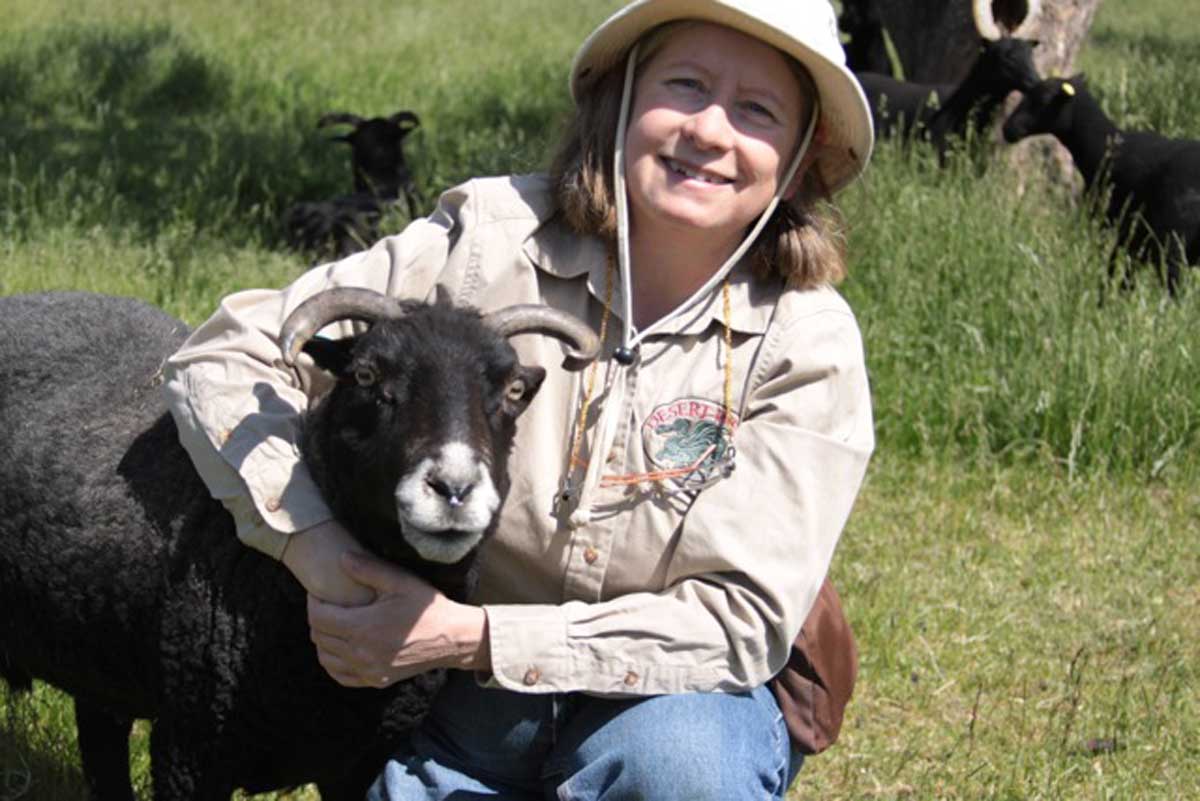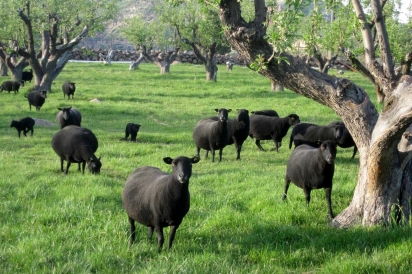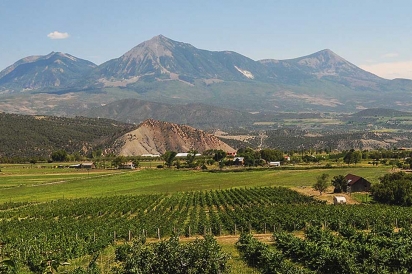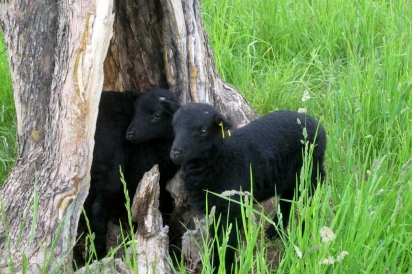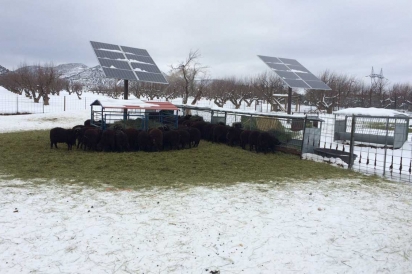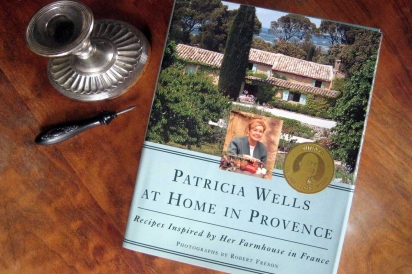"Much Ado About Mutton" at Desert Weyr
“I wanted a medieval Welsh cloak,” confesses Eugenie “Oogie” McGuire, as we stroll amongst the turn-of-the-century apple orchards dotting Desert Weyr, her Paonia sheep ranch. McGuire’s pursuit of an esoteric article of clothing turned into a full-blown career raising heritage breed Black Welsh Mountain Sheep. A second-generation sheep rancher (an important—and oft-overlooked part of Colorado’s agricultural heritage), McGuire looks the part with her floppy sun hat and crook. She grew up on the property on Garvin Mesa, and after retiring from the tech industry, returned—literally—to her roots.
McGuire raised Corridale sheep as a kid in 4-H (“I inherited my mother’s flock.”), but it wasn’t until she and her husband, Ken—himself a retired hardware engineer—inherited the farm in 1998 that they returned to Paonia; prior, they’d been raising CMK Arabian horses in Southern California. Today, however, the McGuire’s are one of the nation’s preeminent breeders of Black Welsh sheep (there are less than 10,000 left worldwide; only 1,500 are in North America). Their flock currently numbers 169, with 22 rams. “We primarily use live cover breeding but we are a research flock for the USDA in sheep reproduction and do some AI [artificial insemination] as part of their experiments,” says McGuire.
“We had to like everything about the breed,” explains McGuire of their choice to raise Black Welsh. “Temperament, wool, meat, manageability. This is a small, docile breed, and while they were traditionally used for wool and mutton [as opposed to lamb, which is slaughtered at under a year of age, although terminology varies depending upon the country] the meat is mild and tender—not gamey.”
Black Welsh sheep are an ancient breed; the flocks can be traced back thousands of years. “Historically, each valley in Wales had its own subset of sheep—so the animals had specific territories,” explains McGuire. There are many subsets of Welsh Mountain Sheep: South White, Nelson, Talybont, Badger Face in two color variations, Balwen, and Black among them. The Black Sheep are from the Middle Ages, and were prized because of their color, which had value amongst different religious groups. “Because of this, the flocks were kept separate from other breeds or subsets.”
The McGuire’s also liked the idea of raising a rare livestock breed in order to help preserve genetic diversity within the species. Today, Desert Weyr is the only breeder of Black Welsh sheep recorded with the National Sheep Improvement Program for breeding value calculations. Their flock is double registered with the UK Black Welsh Mountain Sheep Breeders’ Association and the American Black Welsh Mountain Sheep Association. The McGuire’s also work with the USDA National Animal Germplasm Program, which uses the flock’s DNA for analysis and is home to the national gene bank including sperm and ova in their collection.
“Colorado is home to one of the largest flocks of purebred, registered, performance recorded Black Welsh Mountain sheep in North America,” explains McGuire “We have about 55 active flocks in the US and Canada with a total of approximately 1500 registered sheep. But Desert Weyr maintains three of the eight known bloodline clusters of Black Welsh sheep in North America.” The latter is crucial in order to maintain the aforementioned genetic diversity—not just within the species, but the breed (“I have what I call an “Oh shit” ram of every bloodline we maintain in case something were to happen to the primary and secondary rams, such as disease or predation,” laughs McGuire).
Desert Weyr’s flock forage on mixed irrigated pasture including clover, alfalfa, fescue, brome, timothy, meadow grass, and other plants. In winter their diet is supplemented with hay because sheep can’t dig for forage like other ruminant species. The ranch—about half of which is designated wildlife habitat is on the edge of Garvin Mesa. The area isn’t ideal for most crop production, due to rocky soil. “It’s much better for animals, orchards and wine grapes,” says McGuire. Indeed, Garvin Mesa is home to several wineries, including Stone Cottage Cellars, Azura Cellars and Terror Creek Winery. It’s also a high-predator habitat, which makes raising sheep—already difficult due to their predilection for disease—a challenge.
“Black bears—which are our main predators of sheep in Colorado—can take out an entire flock,” says McGuire. “They go after the udders on lactating ewes. But we also have mountain lions, coyotes, and birds of prey, which will peck out the eyes of young lambs.” All of this medieval-sounding torment is simply nature at work, but to offset the inherent dangers, the McGuire’s keep their sheep in orchard pasture, which helps limit predation by providing shelter and cover in the tall grass. They also use four dogs specially bred for livestock guarding: two Akbash, and two Spanish Mastiffs.
McGuire leads me into the pasture, where she catches a lamb. I joke that the ewes are Hobbit-like, due to their small size and short legs. Ewes range from 75-120 pounds while fully grown rams—which have sweeping horns, range from 125-165 pounds. They’re beautiful animals with a medium dense fleece. They’re shorn in spring. The rams have sweeping horns. McGuire settles into the grass with the lamb so I can pet him.
As we chat, McGuire tells me that Terror Creek drainage is currently the subject of contentious debate over fracking. “When my family and I moved here in the early 70s, there was already a fight over land rights. It’s about so much more than preserving our flock and the debatable safety of the fracking process. There’s the other farmers and ranchers who make their livelihood here, the safety of the works, water contamination.” She sighs. “Can I just concentrate on animal husbandry?”
For the moment, that’s exactly what the McGuire’s are doing. They rely upon “holistic grazing principles,” such as pasture rotation, which helps to improve the soil, and three solar PV systems on the property will enable the ranch to become a net electric producer by year’s end. They also have a solar hot air system to provide heating for the workshop. The electricity runs the water heaters in the barn for the sheep in winter, the chicken lights and brooder each spring and all the freezers in the farm store (where visitors can purchase meat, raw fleece, yarn, and rovings, which is ready-to-spin wool, and hiking socks; the mutton is also sold at Lizzy’s Market in Paonia and used at select restaurants in the Roaring and North Fork Valleys). Desert Weyr isn’t organic because, explains McGuire, “I don’t agree with the federal government standards for livestock. We follow EU standards instead, which relies upon stricter regulations.”
Desert Weyr sheep are slaughtered at 14 to 18 months of age (known as hoggett in the UK but labeled mutton domestically). McGuire is committed to the principles of humane livestock management to the very end, only permitting single-sex groups of eight to 10 “buddy” sheep to travel to the Delta abattoir. “We keep them together for two or three weeks prior so they bond and also train them to load in the trailer so they’re not stressed when we take them to Delta. We also keep them on full feed and water until the night before, and I give them a molasses glycol drench before we depart, which prevents muscle stress, which can ruin the meat.” McGuire has also toured every aspect of the abattoir, including the kill floor, so she’s educated and confident her sheep are enduring the least amount of stress possible, as well as undergoing humane slaughter. “All sheep have a job. Sometimes the job is to feed us, but that doesn’t give us the right to be cruel. These animals deserve a comfortable life and quick humane death before they finally provide us with delicious, healthy meat.”
October 31 is the annual “Celebrate Garvin Mesa” agritourism day. The wineries and Desert Weyr all host open houses at their respective properties, and there are also local food tastings, and other events. Bob Kennard, author of Much Ado About Mutton will also be on hand for a book signing at Desert Weyr. For more information, click here. Want to visit Desert Weyr any old time? Give Oogie a call.
Spicy Lamb Curry with Yogurt & Apples
This is one of my favorite recipes for snowy days. Even though Black Welsh mutton is mild and quite tender, the recipe lends itself well to tougher cuts and types of meat, as well.
Recipe from Patricia Wells at Home in Provence, by Patricia Wells (Fireside, c. 1996)
Serves 4-6
- 6 tablespoons extra-virgin olive oil
- 1 lamb or mutton shoulder, about 3 pounds, cut into cubes and excess fat removed
- Kosher salt and freshly ground black pepper
- 4 medium yellow onions, halved and thinly sliced
- One 2-ounce piece fresh ginger, peeled and minced
- 4 garlic cloves, minced
- 1 tablespoon ground cumin
- 1 tablespoon ground coriander
- 1 tablespoon ground turmeric
- 1 teaspoon ground cayenne pepper
- 1 cup whole-milk yogurt
- 1 firm, acidic apple, such as Granny Smith, peeled and grated
1. In a large covered casserole, heat 3 tablespoons of the oil over moderate heat. When hot, begin to brown the lamb; be careful not to crowd the pan and work in batches. After the lamb is browned on all sides, transfer to a platter and immediately season with salt and pepper.
2. Leave the fat that remains in the casserole and use a spatula to scrape up any browned bits stuck to the bottom. Add the onions and a pinch of salt and cook over moderate heat until soft and golden brown, about 15 minutes. Add the ginger and garlic and cook 1 minute more. Add the cumin, coriander, turmeric, and cayenne, and cook until the spices are fragrant, about 15 seconds. Add the lamb and any juices, along with the yogurt, apple, and 1 cup hot water. Stir to blend. The liquid should just barely cover the meat. Cover and simmer gently, turning the lamb regularly to coat it evenly with the sauce, until the meat is very tender, about 1½ hours.
3. Adjust seasoning if necessary. Serve the lamb atop Basmati rice or with boiled potatoes, and pair with a tannic red wine like Gigonda, or a spicy white like Gewürztraminer.


